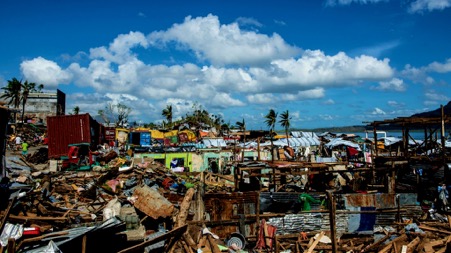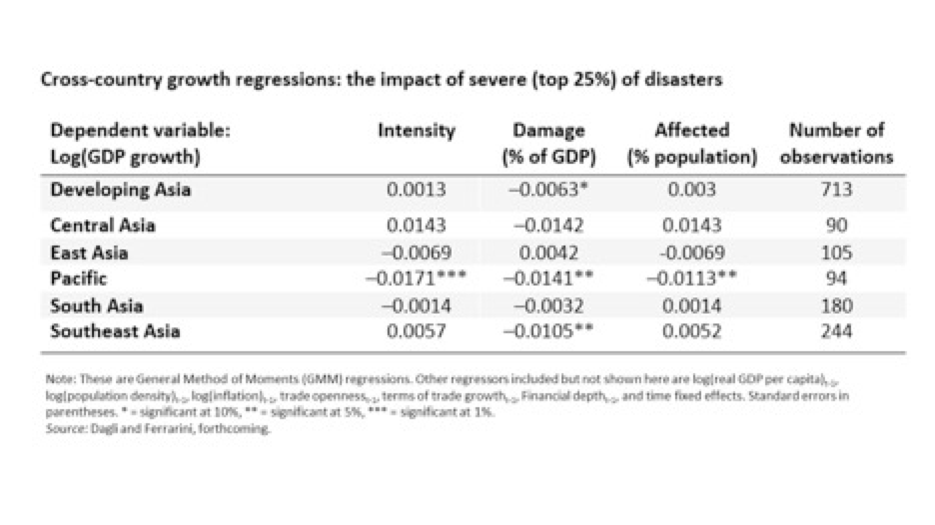
In the Pacific, a major disaster can slow the country’s gross domestic product by 1-2 percent, according to an Asian Development Bank Report titled, “GDP tragedy: Preventing natural hazards from turning into economic disasters.”
Benno Ferrarini, Principal Economist and Suzette Dagli, Economics Officer from ADB”s Economic Research and Regional Cooperation Department researched how disasters affect economic growth in Asia. Their work involved estimating cross-country growth regressions from 1980 to 2017, based on the Emergency Events Database (EM-DAT) and World Bank data.
It found that severe disasters, the strongest 25% among all the disasters on record during the years analyzed, lowered GDP growth significantly in the Pacific small island developing states.
The output of these economies slowed by between 1-2 percentage points on average, depending on whether disasters are measured in terms of intensity, damage, or the number of people affected.
The results show that growth in developing Asia as whole is far less affected, and the same is true for all its subregions, other than the Pacific.
There is some evidence of a negative growth impact for Southeast Asia, but there are no statistically significant negative results for East Asia, Central Asia, and South Asia.
Outside Asia, the study finds that growth in the Caribbean is most severely impacted by disasters, reinforcing the conclusion overall about the disproportionate susceptibility of small island economies to the impacts from natural hazards.

Asia
The developing countries of Asia are home to more than half of the world’s people, most of whom live in areas that are prone to disasters.
The report said natural hazards such as storms and earthquakes, frequently endanger people and demolish fixed assets, capital, crops and raw materials, especially in areas that have high exposure and vulnerability such as a city with poor building quality in an earthquake-prone location.
Between 2000 and 2018, developing Asia was home to 84% of the 206 million people affected by disasters globally each year, according to a special chapter on disaster resilience in ADB’s Asian Development Outlook 2019.
The report noted that developing countries in Asia also accounted for 55% of the 60,000 disaster fatalities worldwide.
Economic damage and more tragically, loss of life impair economic activity and slow its expansion. The destruction of human and physical capital results not only in foregone production, but spillovers and knock-on effects can ripple across the entire economy.
Between 2000–2018, disasters cost the region $644 billion in total damages to physical assets, which is a very conservative estimate due to underreporting of less visible events, especially slow-onset and recurring disasters such as droughts or monsoonal flooding.
In relative terms, impacts are felt most strongly in the Pacific, where more than 10% of population and 6% of assets are affected by disasters each year on average.
Tail events, such as Cyclone Pam which swept across the southern Pacific Ocean in March 2015, can be truly catastrophic and leave nothing but destruction in their wake, like that damage equivalent to 64% of gross domestic product (GDP) incurred in Vanuatu.
More often, though, disasters are localized events with impacts concentrated in the affected area. However intense locally, impacts tend to be diluted when averaged out over a large unit of analysis, such as national GDP.
This aggregation problem explains, in part, why the literature on the impact of disasters on growth remains largely inconclusive. Some empirical studies have indeed documented disruptive effects on growth, but others have struggled to produce corroborating evidence, or even found that, actually, disasters may benefit growth, such as cases of mild flooding which leads to higher soil fertility and agricultural output, said the report.



